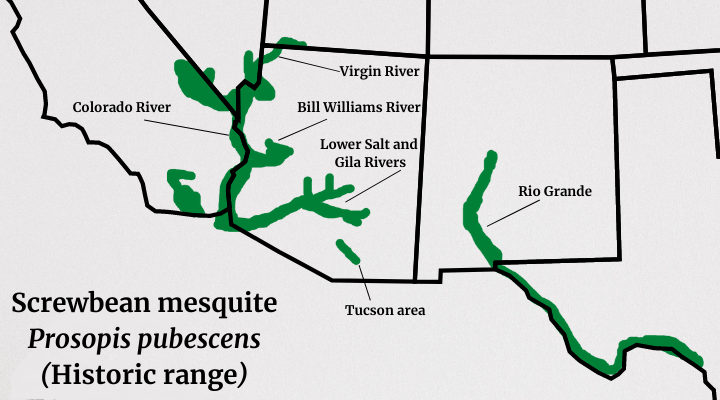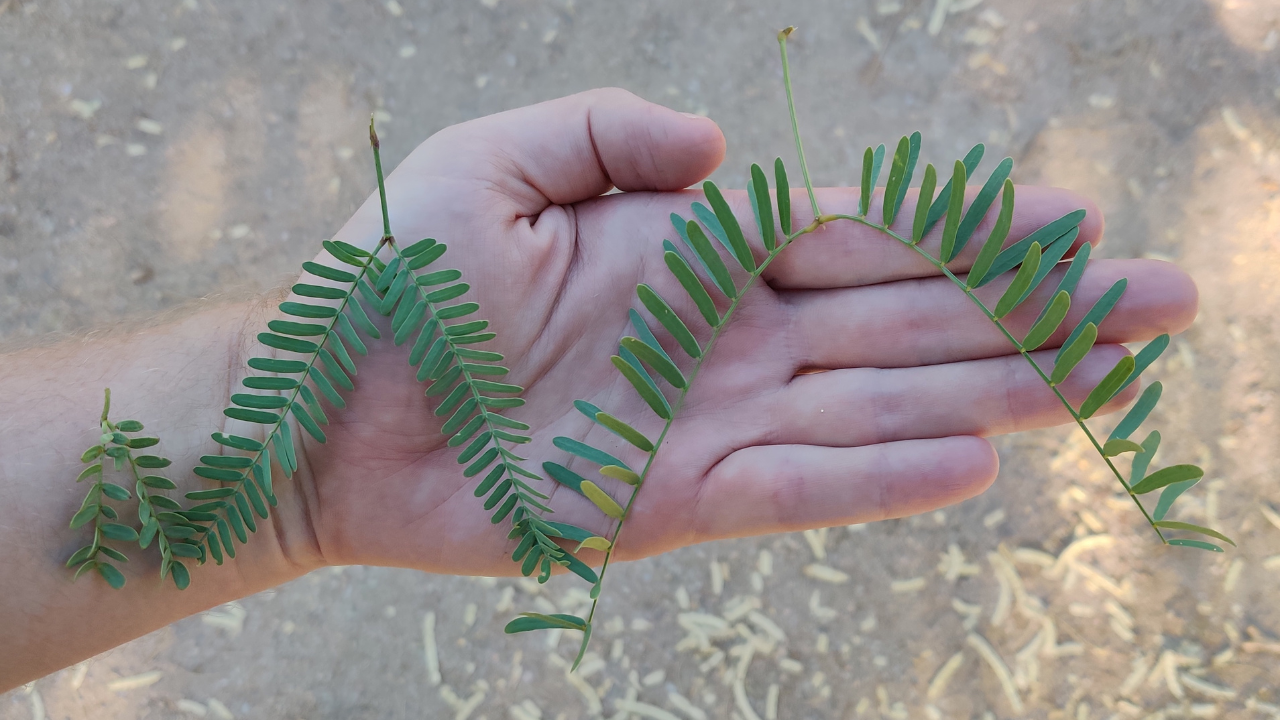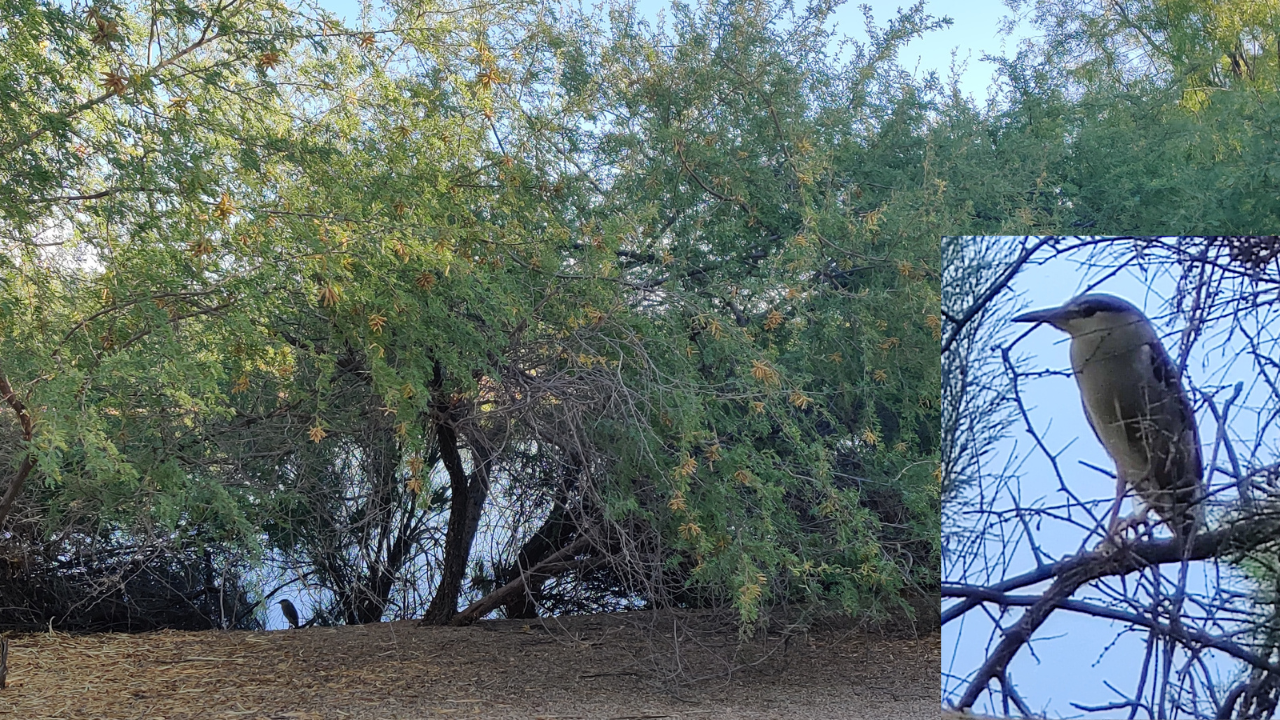
The Edible Screwbean Mesquite Tree (Bean Pods + Historical Uses)
Sep 07, 2022Introduction
Screwbean mesquite(Prosopis pubescens) is a small tree native to Southern Arizona, where it grows along rivers in the Sonoran Desert. In this article we're going to look at the identification and edible uses of screwbean mesquite, its range throughout our desert, and some of its historical uses.
Screwbean mesquite has edible pods(beans) that were an important food source for Native Americans. Virtually every tribe that lived near these wonderful trees used them for food. In fact, in their classic work Pima and Papago Indian Agriculture, Edward Castetter and Willis Bell list screwbean among the four most important wild-harvested foods of the Pima, especially in years of "inadequate water supply or crop failure from other causes". They also mention that the Maricopa(who relied less on agriculture than the Pima) considered both regular mesquite and screwbean "more important that maize".

Identification and Range
Screwbean is the smallest mesquite species in Arizona, and it's easily identified by its unique bean pods when they're in season. It also has the brightest colored flowers of all of the mesquites, being a very bright, deep yellow, compared the white or pale yellow flowers of velvet and honey mesquite. Its leaves are much smaller than other mesquite species, and when its not in season, it tends to be tricky to identify.
Historically screwbean mesquite grew along permanent waterways throughout the Southwest, including the Rio Grande, Colorado, Bill Williams, Gila, Lower Salt and Verde, and Santa Cruz rivers, as well as a number of other locations scattered throughout Southern California. However, today screwbean is much less common that it used to be. Like many other riparian plants in the Southwest, screwbean is under threat from lowering water levels and urban sprawl. In fact, one 2014 study estimates that screwbean has disappeared from 53% of its former range(Foldi).

If that wasn't bad enough, large numbers of screwbean mesquite started dying off along the lower Gila and lower Colorado rivers in 2005, and researchers now suspect a pathogen is responsible.That being said, die-off is a complex issue, so even if a pathogen is involved, that might not be the only contributing factor. This is just a better reason to add screwbean to your home landscape.

Leaves from left to right: Screwbean(Prosopis pubescens), velvet mesquite(P. velutina), and Texas honey mesquite leaves(P. glandulosa)

Closeup of screwbean leaves and thorns.
Edible Uses
Like other mesquite beans, screwbean mesquite is edible and delicious. It has a wonderful flavor reminiscent of graham crackers, and personally I think it tastes even better than other mesquites.
The pods ripen a little later than other mesquite beans. They fall to the ground around late June-mid July in the Phoenix area, which is 2-3 weeks later velvet mesquite.
Screwbean pods are much easier to eat raw than other mesquite beans, but they can also be ground into flour. I've never ground them into flour, because the only place I've ever found screwbean is at the Gilbert Riparian Preserve, where I've just tasted them briefly.
For velvet mesquite beans, I dry the pods in an oven at 200°F for 60-90 minutes, or until they get a golden color. The moisture has to be driven out before being ground, or else it will gum up your blender. Once dried, the pods are put into a blender, then the flour is strained. I'm not sure it's necessary to dry screwbean pods in the oven first, but it couldn't hurt. It's probably best that they're dried before storing them anyway.
Unlike other mesquite species, screwbean was historically pit-cooked by some tribes before consumption. Before pots and pans, people would dig pits in the ground to cook food. The pits were lined with stones, then a fire was started on top of the stones to heat them. Once the coals were removed, the pits were lined with vegetation, then whatever was to be cooked was added next. Finally, another layer of vegetation was added to cover the food, and the pit was covered with a layer of dirt.
Pit cooking was historically done with many of our native desert foods, including cholla buds and agave hearts(and some Indians still do it to this day). Apparently, in the case of screwbean, pit cooking would hasten the ripening of the pods and make them sweeter. However, by 1997 the tradition of pit cooking screwbean pods had fallen out of practice(Rea).
Screwbean mesquite wood was valued for all kinds of things back in the day. It was even considered a good wood for making bows.
Conclusion
Screwbean mesquite is an excellent tree for an edible landscape or desert "food forest", but it will need some extra irrigation, being more water-loving than other mesquites. It's one of many forgotten and underutilized desert foods. Maybe this article can play a small part in changing that. Thanks for reading,
-Matthew Hunter

Black-crowned Night Heron hanging out under a screwbean mesquite.
References
Food Plants of the Sonoran Desert by Wendy Hodgson
At the Desert's Green Edge- An Ethnobotany of the Gila River Pima by Amadea Rea
Trees and Shrubs of the Southwestern Deserts by Lyman Benson and Robert A. Darrow
Pima and Papago Indian Agriculture by Edward Castetter and Willis Bell
Screwbean Mesquite (Prosopis pubescens) Die-off: Population Status at Restored and Unrestored Sites in the Lower Colorado River Watershed by Robert Madera
Disappearance of a dominant bosque species: screwbean mesquite (Prosopis pubescens) by Steven E. Foldi (The Southwestern Naturalist, 59(3), 337-343, September 2014)
Want our FREE ebook on Sonoran Desert foraging? Check out this link to download it today: https://www.legacywildernessacademy.com/sonoran-desert-ebook


